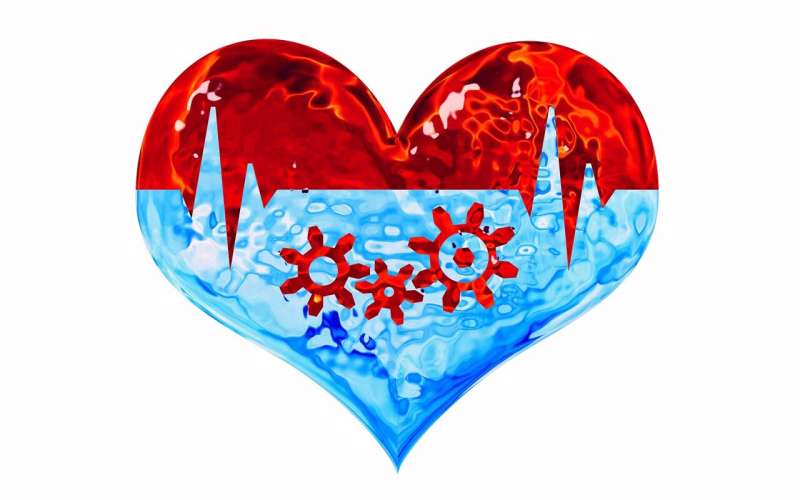This article has been reviewed according to Science X's editorial process and policies. Editors have highlighted the following attributes while ensuring the content's credibility:
fact-checked
trusted source
proofread
Neural network predicts survival of critically ill patients on heart–lung bypass

A research team led by engineers and cardiologists from Monash University has used artificial intelligence (AI) to develop an algorithm to accurately predict the survival of intensive care patients who need external heart–lung support (ECMO).
The ECMO Predictive Algorithm or "ECMO PAL" is the first AI-powered ECMO survival score trained and validated on a large international patient cohort.
The importance and groundbreaking nature of the research has been recognized by the Cardiac Society of Australia and New Zealand (CSANZ), which selected Monash researcher and cardiologist Dr. Michael Šeman as a finalist for its prestigious Ralph Reader Prize for young investigators.
ECMO: Life-saving, complex but costly
Venoarterial extracorporeal membrane oxygenation (commonly known as ECMO), an artificial heart-lung system operated outside the body, is often used to support critically ill patients who have severe cardiac and respiratory failure.
ECMO can be life-saving but is also complex, high risk and costly, so appropriate evidence-based patient selection is crucial.
Led by biomedical engineer Dr. Andrew Stephens, deputy director of the Monash Cardio-Respiratory Engineering And TEchnology laboratory (CREATElab), and Dr. Michael Šeman, the multidisciplinary research team set out to develop an accurate and beneficial predictive measure to improve data-driven decisions about ECMO patient selection, management and resource allocation.
A deep neural network (DNN), which mimics the behavior of human learning and can recognize patterns to identify and solve problems, was trained using data from more than 18,000 patients treated with ECMO in more than 400 centers across Europe, North America, Latin America, Africa and the Asia-Pacific region.
AI outperformed existing scores
The resulting AI-derived model, ECMO PAL, outperformed all existing, widely-used scores in terms of its ability to predict the outcomes of ECMO treatment, particularly the risk that the patient would die in hospital.
ECMO PAL proved highly reliable and generalizable across different geographic regions and was able to make accurate predictions across a very diverse group of patients.
"Using AI offered us an advanced alternative to statistical methods for developing risk and survival scores," explained Dr. Stephens.
"AI can be applied to large and variable data sets, and it can help uncover patterns and interactions that might otherwise be missed by traditional statistical approaches."
Because the predictive accuracy of AI models can change over time as clinical practices and patient populations evolve, the Monash researchers have designed the ECMO PAL system to continue to learn, so the algorithm can be updated and "fine-tuned" with new data and predictive variables as they become available.
The paper, "ECMO PAL: Using Deep Neural Networks for Survival Prediction in Venoarterial Extracorporeal Membrane Oxygenation," is published in the international journal Intensive Care Medicine.
ECMO PAL will be made available in the coming weeks for free, global and anonymous use via www.ecmo-pal.icu
More information: Andrew F. Stephens et al, ECMO PAL: using deep neural networks for survival prediction in venoarterial extracorporeal membrane oxygenation, Intensive Care Medicine (2023). DOI: 10.1007/s00134-023-07157-x





















